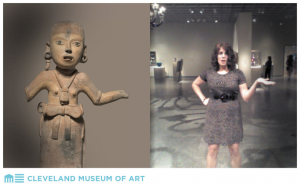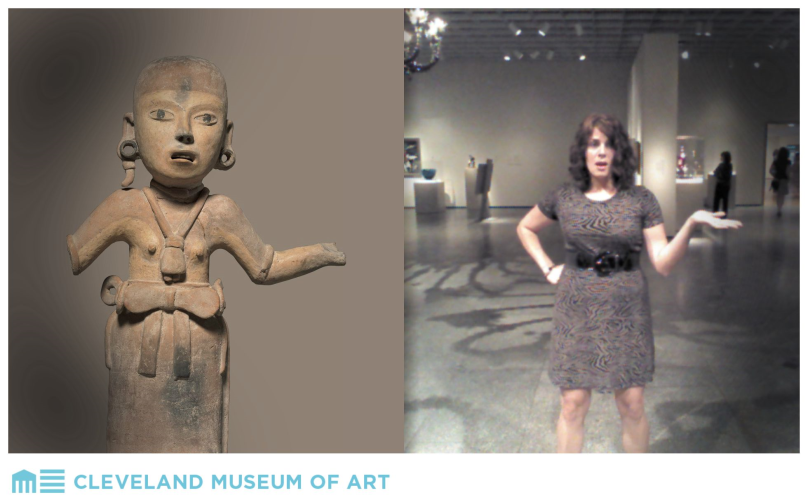Traditionally, art museums take visitors on a on a somewhat removed, hands-off tour of history through crackling paintings and crumbling statues. But at the Cleveland Museum of Art, technology and touchscreens are vaulting guests into the future of museum-going with high-tech opportunities to interact beyond the gallery walls.
Last week, the Cleveland Social Media Club got a closer look at the new Gallery One addition, where centuries of art are coming to life with the flick of a finger on a screen. The innovative advances, part of a $350 million expansion project, move the Cleveland Museum of Art to the leading edge – drawing visits from more than 50 museums worldwide within the past two months. But the project was never just about adding some cool technology for technology’s sake.
Initially, the museum’s goal was to “attract, entertain, educate and engage more visitors,” according to IT Director Jane Alexander. Technology was simply the best bridge to enhance the experience by leveraging the wealth of information around each work of art.
The focal point of the tech-savvy Gallery One is a 40-foot multi-touchscreen, a masterpiece in its own right as the largest of its kind in the nation. “The Collection Wall” scrolls through thumbnails of the 3,000+ works in the museum. As visitors tap a floating image, the screen pulls up more information about the piece and introduces similar items by category, artist, medium or period. At 16 docks along the screen, you can even connect an iPad (or rent one from the museum for $5 a day) to save your favorite works, creating a personalized tour like a playlist of the museum.

At other interactive stations throughout the gallery, visitors can mimic the pose of a sculpture or make silly faces to find artwork a similar expression in the museum’s collection, all using XBOX Kinect. Beyond Gallery One, iPad technology follows people through the museum with an app called ArtLens to offer additional info about each piece. Use your iPad ‘lens’ to capture a Buddhist statue, for example, and you’ll see a photo of what the piece might have looked like in its original temple setting.
But it’s not just about big touchscreens or cool iPad apps – Gallery One is revolutionizing the museum experience by adding layers of context and personalization to untouchable artifacts… Or, at the very least, adding some touchscreen capabilities for the geeks whose thumbs twitch at the thought of spending several tech-less hours in a museum. The modern tools are enabling hands-on discovery and facilitating new engagement between guests and masterpieces, setting the stage for how bastion art museums around the world can blend interactive technology with compelling results.
>>Like the Cleveland Museum of Art on Facebook
>>Follow @ClevelandArt on Twitter
Social Media for Non-Profits
After expanding the possibilities for guests to share their museum experience online, the Cleveland Museum of Art had to enhance its ability to manage the ensuing social conversation. So social media doesn’t live in a silo with a single employee, but with a team that tackles the effort from all angles.
At the June Social Media Club meeting, the museum’s IT director Jane Alexander led a Q&A with other local nonprofits about this trend of shared social responsibility.
The Cleveland Metroparks, for example, has about a dozen people in the marketing department – but 20 folks listed as Facebook administrators. Eric Barnett, the digital marketing specialist, heads up the team effort, which is the result of much collaboration.
“The key is to keep your brand voice consistent on print and Web,” he says. “But when it comes to social media, you have to learn to give your team guidelines and then let go.”
So the staff understands the policies and purpose of posting, but the perspectives vary. One naturalist’s update may be more scientific about bird migration, for example, and another more reflective. That variety, sprinkled around standards like Mystery Monday photos, has garnered 45,000 likes on the Metroparks’ Facebook page.
Because social media is really about people, after all, it makes sense to turn the task over to the people. Oftentimes, that’s where the real story lies, anyway.
“A good story sells on social media,” Barnett says. “Nonprofits inherently have good stories because you do good things for people.”
>>Like the Cleveland Metroparks on Facebook
>>Follow @CleveMetroparks on Twitter

